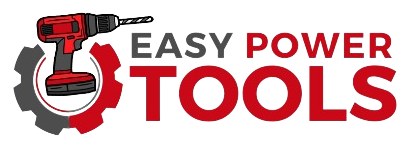I think You’re searching that What Size Generator for Miter Saw?
Well!
You’re on right place because we already have worked for you. When it comes to powering your miter saw at construction sites or in locations without a stable electrical supply, having the right generator size is crucial.
Miter saws are essential tools for precision cutting in woodworking and construction projects, but they can be power-hungry.
To ensure seamless operation and prevent damage to your equipment, it’s essential to select a generator that can meet the power requirements of your miter saw.
In this comprehensive guide, we will delve into the factors to consider and provide guidance on what size generator is suitable for your miter saw.
Understanding Miter Saw Power Requirements
Before determining the generator size you need, it’s vital to understand the power requirements of your miter saw.
Miter saws come in various sizes and types, and their power demands can vary significantly. The primary factors that influence power requirements include:
a. Blade Size: Larger blades tend to require more power to operate efficiently. A 12-inch miter saw will typically demand more power than a 10-inch one.
b. Motor Power: The motor power rating of your miter saw is measured in amps or watts. Check your miter saw’s manual or nameplate for this information.
c. Continuous vs. Peak Power: Miter saws have both continuous and peak power requirements. The continuous power is what the saw needs to run steadily, while the peak power is required for startup and handling heavy loads.
Determining Power Needs
To determine the power needs of your miter saw, you’ll need to consider both the continuous and peak power requirements. Start by finding the amperage rating on your saw’s nameplate or in the user manual.
If it’s listed in watts, you can convert it to amps by dividing the wattage by the voltage (typically 120V for most miter saws). For example, a 1,200-watt miter saw would require approximately 10 amps (1,200W ÷ 120V).
Next, consider the peak power requirement, which is often higher than the continuous power. Peak power can be up to three times the continuous power for some miter saws.
This additional power is needed when the saw starts up and during heavy cutting. For example, a miter saw with a continuous power requirement of 10 amps may have a peak power demand of 30 amps.
It’s essential to note that these values can vary between different miter saw models, so always consult your saw’s documentation for accurate specifications.
Generator Sizing Guidelines
Once you have determined your miter saw’s power requirements, it’s time to choose an appropriately sized generator. Here are some guidelines to help you make an informed decision:
a. Continuous Power Rating:
Your generator should provide at least as much continuous power as your miter saw requires. If your saw draws 10 amps continuously, choose a generator rated for 10 amps or more.
b. Peak Power Rating:
To accommodate the peak power demands of your miter saw, select a generator with a peak power rating significantly higher than the saw’s peak requirement.
This extra capacity ensures that the generator can handle startup surges and heavy cutting without overloading.
c. Consider Other Equipment:
If you plan to run other tools or equipment simultaneously with your miter saw, factor in their power requirements when sizing your generator. Sum up the amperages or wattages of all connected devices to determine the generator’s total load.
d. Fuel Type and Runtime:
Generators come in various fuel types, such as gasoline, propane, or diesel. Choose a fuel type that suits your needs and provides sufficient runtime for your projects. Ensure that the generator has a fuel capacity that can last as long as your work demands.
e. Portable vs. Stationary Generators:
Consider the portability of the generator. For jobs that require mobility, a portable generator with wheels may be more suitable. Stationary generators are typically larger and more powerful but are designed for permanent installations.
Examples of Generator Sizes
To provide a better understanding of generator sizes for miter saws, let’s consider a few examples:
a. Small Miter Saw (7-1/4-inch blade):
A small miter saw with a continuous power requirement of around 10 amps and a peak power demand of 30 amps would be adequately powered by a portable generator with a continuous rating of 15 amps and a peak rating of 40 amps.
b. Medium Miter Saw (10-inch blade):
A medium-sized miter saw with a continuous power requirement of 15 amps and a peak power demand of 45 amps would require a portable generator with a continuous rating of 20 amps and a peak rating of 60 amps.
c. Large Miter Saw (12-inch blade):
A large miter saw with a continuous power requirement of 20 amps and a peak power demand of 60 amps would need a more substantial generator with a continuous rating of 30 amps and a peak rating of 80 amps or more.
Conclusion – What Size Generator for Miter Saw?
Selecting the right generator size for your miter saw is essential to ensure safe and efficient operation.
Understanding your miter saw’s power requirements, considering peak power demands, and accounting for additional equipment will help you choose an appropriately sized generator.
Remember that it’s always better to choose a generator with a slightly higher capacity than your immediate needs to accommodate unexpected power surges and ensure reliable performance on the job site.
With the right generator, you can power your miter saw and complete your woodworking or construction projects with confidence.


